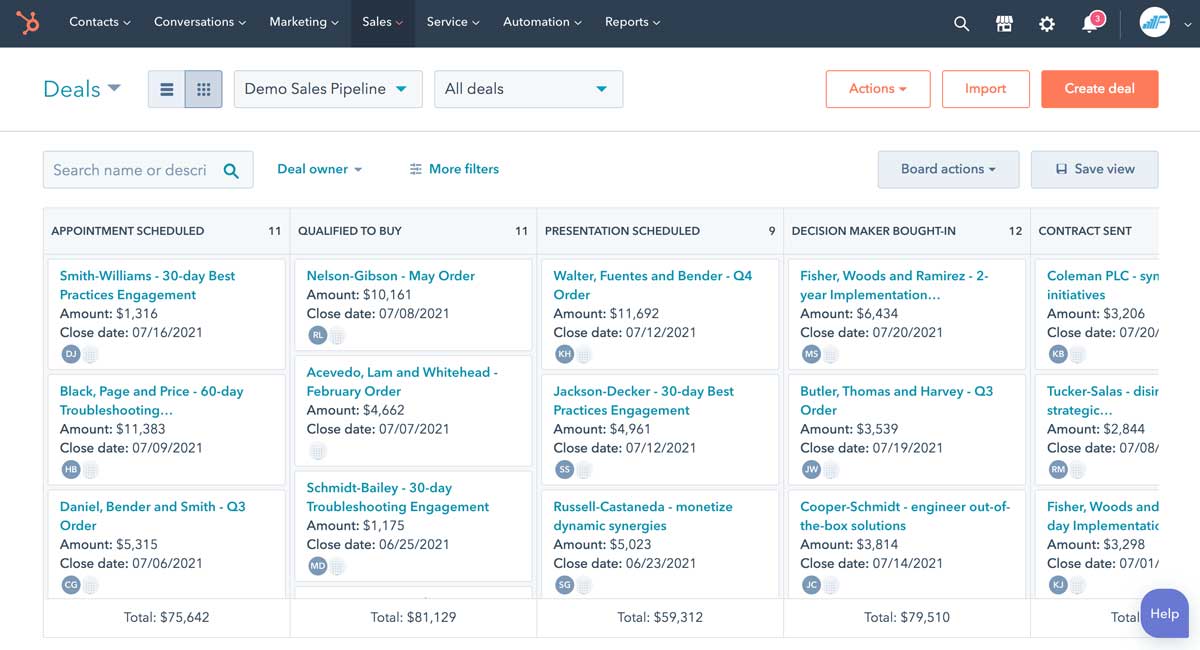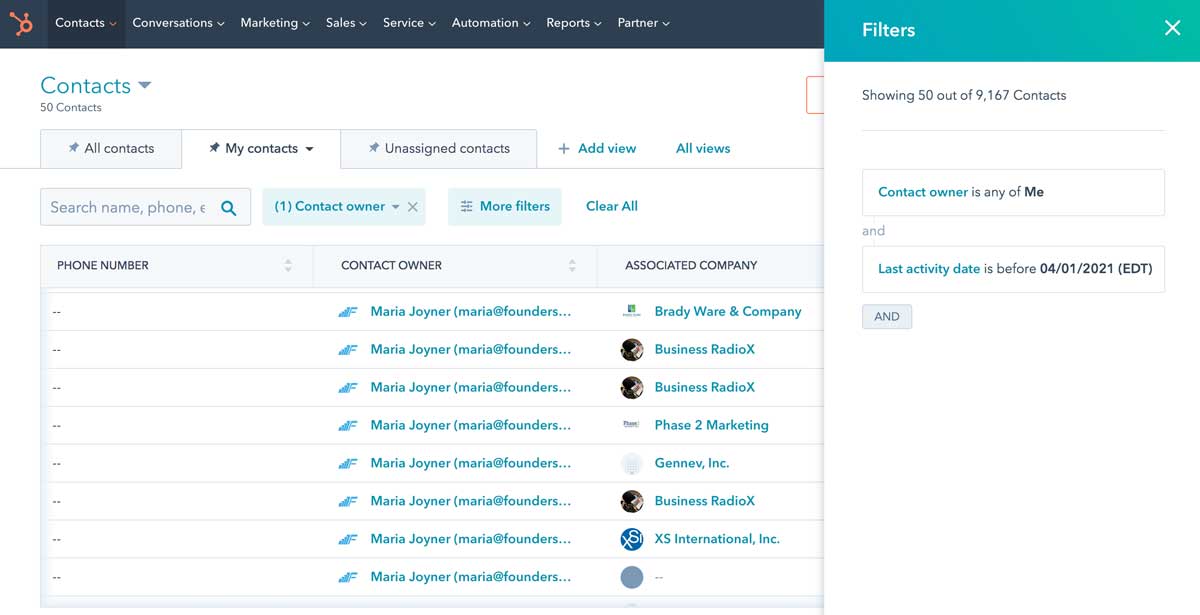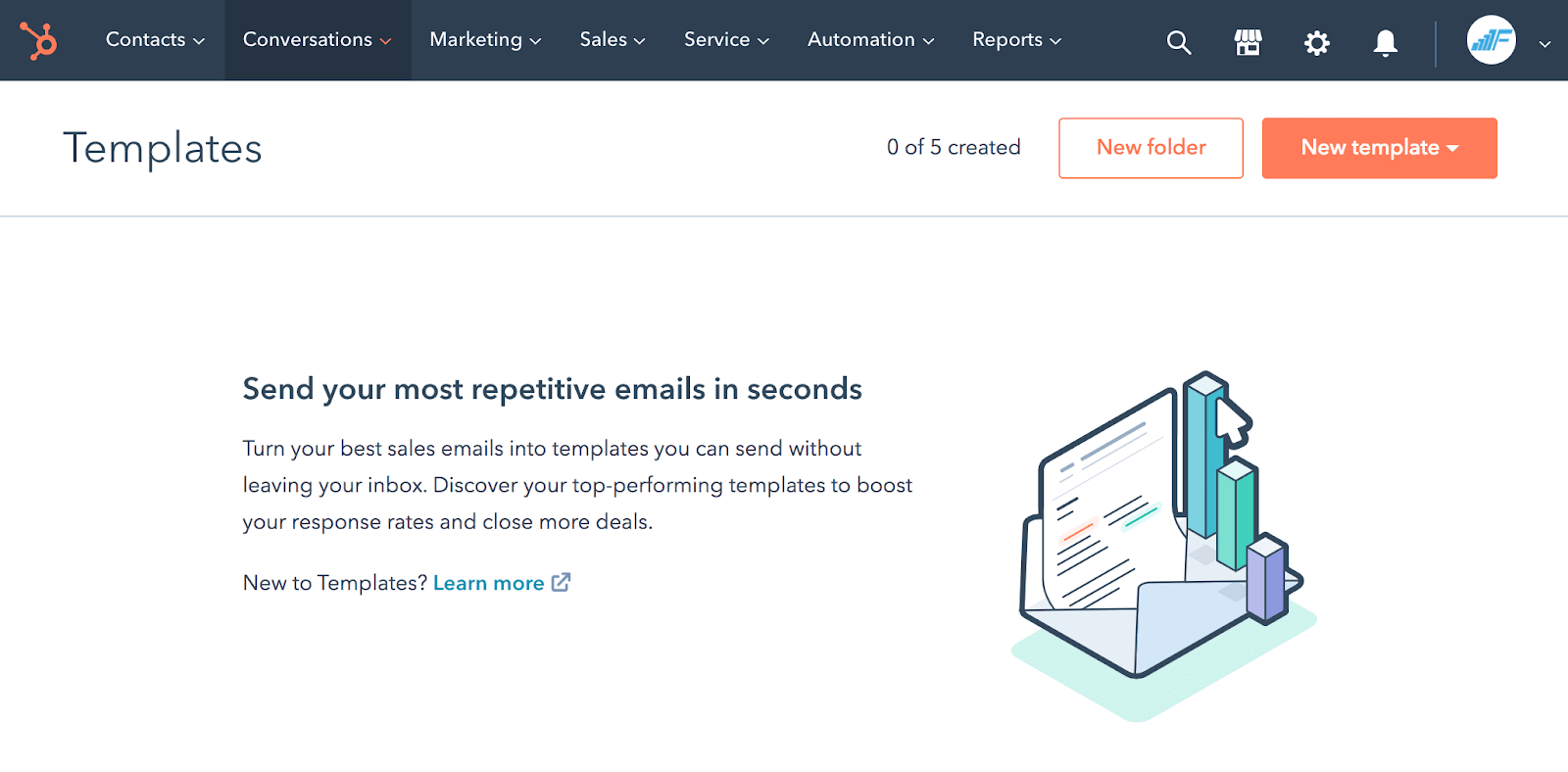Spreadsheets are awesome! You can do practically anything with them, create any structure, add any data and management loves them. When it comes to increasing sales and Hubspot sales adoption, they are the ultimate sales anchor. Let’s start with a few challenges spreadsheets create once you have committed to increasing sales and using Hubspot CRM.
- Spreadsheets are usually owned by one person who protects them like their firstborn. They control the data that goes in and out of the spreadsheet so that it stays accurate. This means that they are also the bottleneck of all reporting and that sales metrics are not constantly accessible or collaborative.
- Spreadsheets have too much data that only matters to the manager and doesn’t affect the sales reps. I see spreadsheets that are basically Quickbooks meets CRM meets Service data used during weekly sales updates. Two-thirds of the data is not relevant to the sales team for that specific type of meeting.
- The Spreadsheet pass around is when a user exports data from the CRM to give to another person who must then log sales activities in the CRM. For example, the sales manager needs a sales rep to follow up on a list of people so they export and mail the list. This process completely undermines the same sales manager’s push to get reps to adopt the CRM.
The short of the matter is that spreadsheets undermine the goal to drive CRM adoption every time they are used. Let’s look at a few ways that ditching the spreadsheet and using the CRM helps increase revenue and Hubspot sales adoption.
4 Way to Ditch Spreadsheets and Drive Hubspot Sales Adoption
1. Weekly sales meetings should leverage a combination of the Hubspot Deals screen, reports, and/or Hubspot Dashboards. This reinforces that the sales data must live in and be executed using Hubspot sales tools.
2. List management has to be done using Hubspot Lists and Contact/Company Filters. This ensures that each person on the team knows how to properly use the CRM features. It also cuts down on the spreadsheet pass around, which often leads to data living outside the system.
3. Hubspot feature discovery happens organically. One interesting thing I see happen with users is that when they have to use data in the CRM and not outside, they learn the features. This drives Hubspot sales tool adoption as they discover time-saving features like templates and sequences which leads to more sales output.
4. What gets managed gets done. When managers ditch the spreadsheet and start using Hubspot sales and marketing reports, they discover gaps. They are getting data straight from the source and can ask the right questions to the relative team. Without going to the source, management will always get cultivated numbers that can inadvertently or overtly hide sales and marketing challenges.
The reality is that no CRM should replace a dynamic spreadsheet that you have groomed to exacting standards over years of use. But the same spreadsheets that you know and love could be a blocker to sales growth and Hubspot sales adoption. If you need any more tips on ditching the spreadsheet to increase Hubspot sales adoption, please reach out with your questions or thoughts so that we can bring you more great content.






